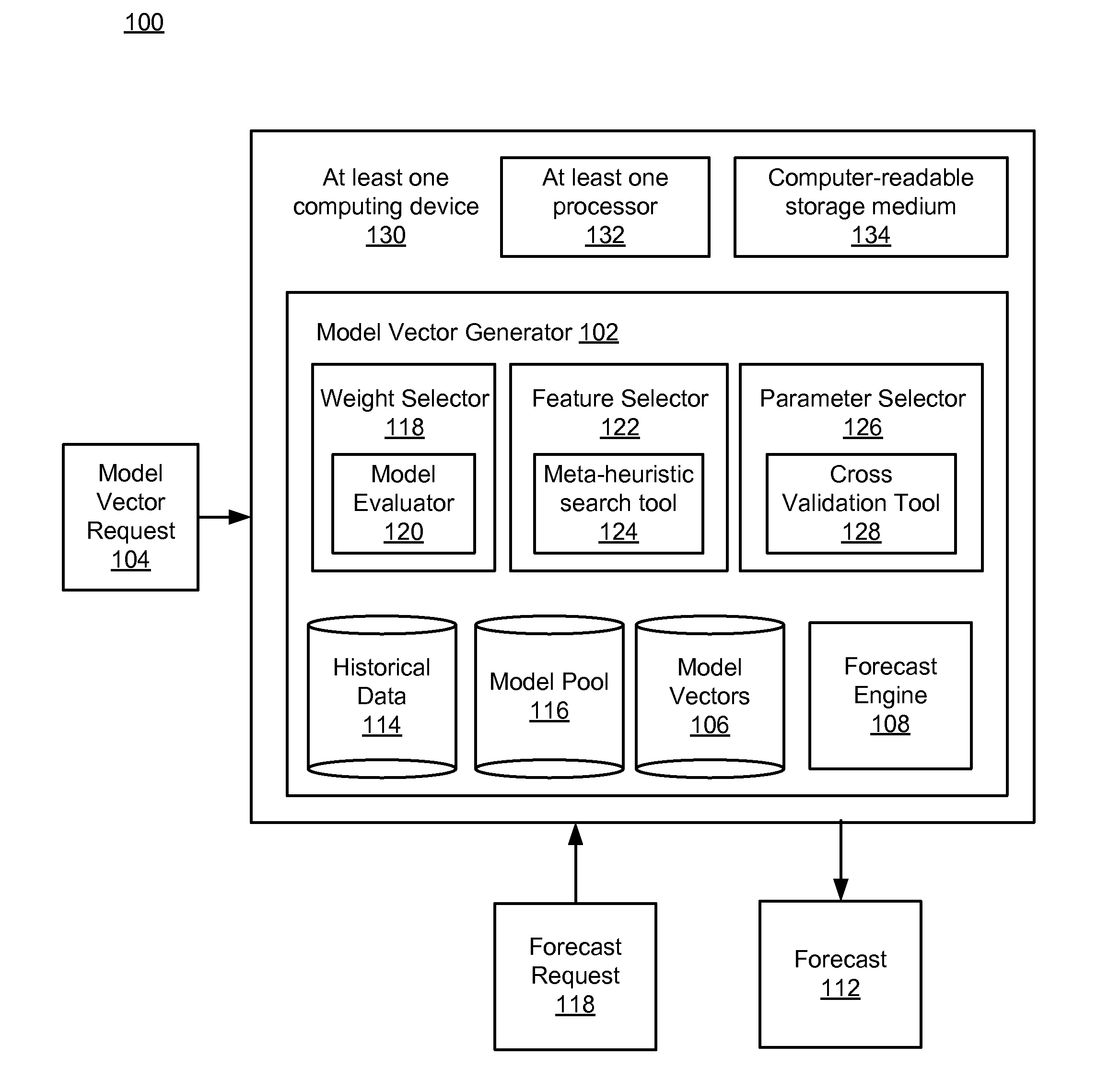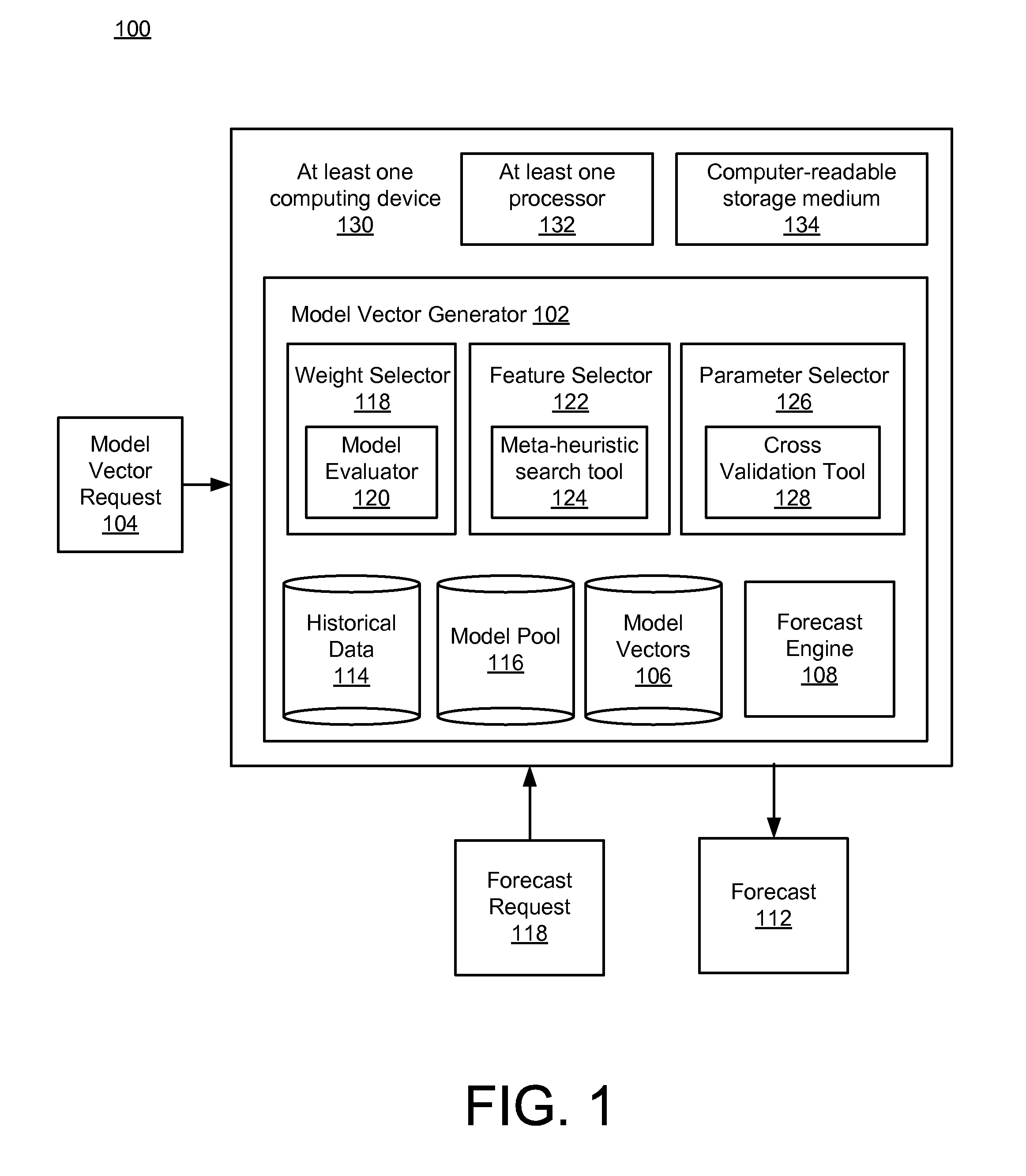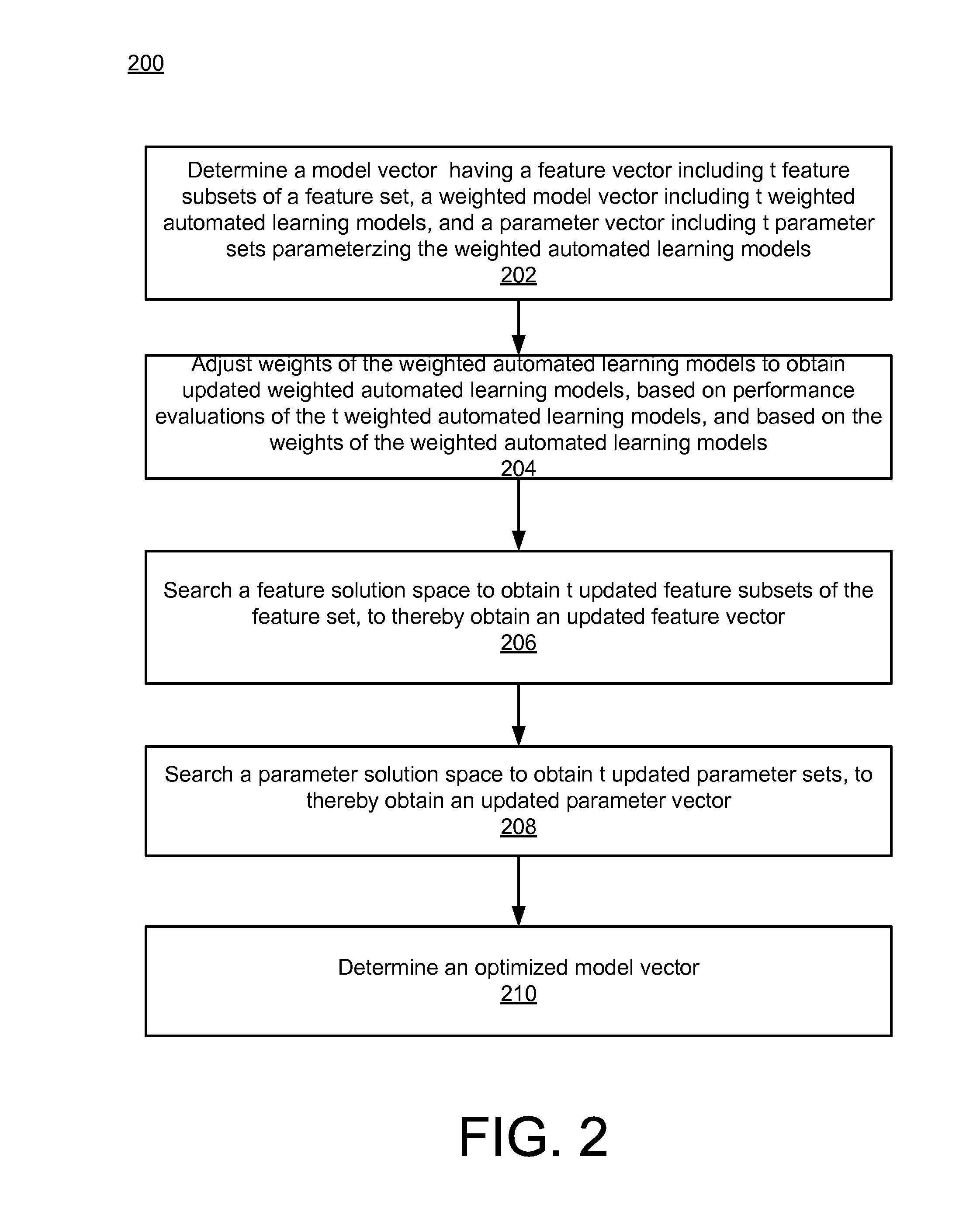Model vector generation for machine learning algorithms
a machine learning algorithm and model vector technology, applied in the field of machine learning algorithms, can solve the problems of difficult selection and configuration of machine learning algorithms to obtain desired outcomes, and the potential user often does not obtain the benefits of such machine learning algorithms
- Summary
- Abstract
- Description
- Claims
- Application Information
AI Technical Summary
Benefits of technology
Problems solved by technology
Method used
Image
Examples
Embodiment Construction
[0015]FIG. 1 is a block diagram of a system 100 for model vector generation for machine learning algorithms. In the example of FIG. 1, a model vector generator 102 receives a model vector request(s) 104, and produces one or more resulting model vectors 106. Through the use of the resulting, optimized model vectors 106, a forecast engine 108 is enabled to receive, e.g., a forecast request 118, and return a corresponding forecast 112. In this way, as described in detail below, users of the system 100 may obtain the various benefits of known and future machine learning algorithms, in a fast, effective, and efficient manner, which is highly adaptable to many different types of use cases.
[0016]More particularly, model vectors 106 represent weighted combinations of machine learning models, each machine learning model associated with a corresponding feature set and parameterized by corresponding model parameters. As referenced above, such a model vector represents a “vector of vectors” in ...
PUM
 Login to View More
Login to View More Abstract
Description
Claims
Application Information
 Login to View More
Login to View More - R&D
- Intellectual Property
- Life Sciences
- Materials
- Tech Scout
- Unparalleled Data Quality
- Higher Quality Content
- 60% Fewer Hallucinations
Browse by: Latest US Patents, China's latest patents, Technical Efficacy Thesaurus, Application Domain, Technology Topic, Popular Technical Reports.
© 2025 PatSnap. All rights reserved.Legal|Privacy policy|Modern Slavery Act Transparency Statement|Sitemap|About US| Contact US: help@patsnap.com



